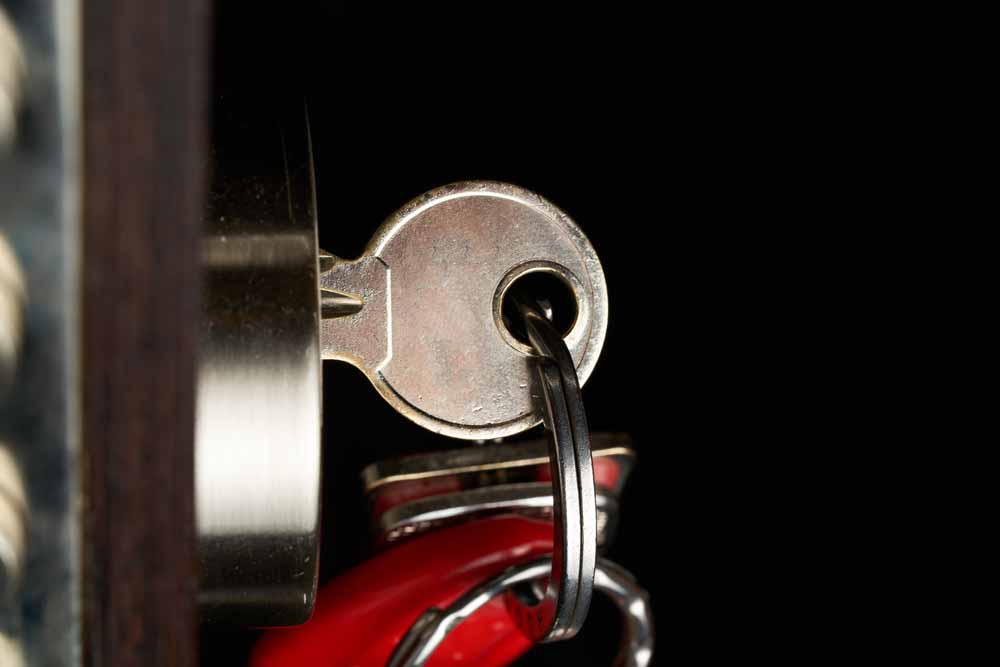
Having your key snap off inside a lock can be frustrating and stressful, especially if you’re locked out of your home, office, or car. While extracting a broken key from a door lock might seem like a DIY task, it requires precision, the right tools, and an understanding of lock mechanisms.
Understanding Why Keys Break in Door Locks
Common Causes of Key Breakage in Door Locks
Keys don’t just break randomly—several contributing factors can increase the likelihood of a key snapping in the lock. Understanding these causes can help you prevent similar incidents in the future.
- Metal Fatigue or Wear
Keys are usually made from soft metals like brass or nickel. Over time, daily wear and tear can weaken the key, especially at stress points near the notches or bow (the handle). - Improper Insertion or Removal
Yanking a key out at an angle or jamming it into a dirty or misaligned lock can bend or stress the metal. - Cold Weather Conditions
In colder temperatures, metal contracts. Combined with stiff locks due to freezing, the extra force applied can cause the key to snap. - Worn or Dirty Locks
A lock full of grime, rust, or old lubricant can become sticky or difficult to turn. If the key is forced under these conditions, it may break. - Using the Wrong Key
Trying to use a similar-looking key in the wrong lock can cause it to get stuck and break, especially if forced. - Manufacturer Defects or Cheap Key Copies
Not all keys are created equal. Poorly cut or duplicated keys can have microscopic imperfections that lead to breakage.
Knowing these common causes helps you stay proactive—regular lock maintenance and avoiding excessive force can go a long way.
Step-by-Step Guide to Extract a Broken Key Door Lock Safely
If your key has broken off in the lock, don’t panic. With the right tools and careful execution, you might be able to remove the broken key yourself without damaging the lock cylinder.
DIY Tools and Techniques for Extracting a Broken Key Door Lock
Before attempting any of the steps below, take a deep breath and gather the following materials (some can be found at hardware stores or online):
Tools You’ll Need:
- Needle-nose pliers or tweezers
- Flathead screwdriver
- Broken key extractor (available at locksmith supply stores)
- Paperclip or safety pin (as improvised extractor)
- Super glue (optional and tricky—use with caution)
- Lubricant spray (like WD-40 or graphite lubricant)
- Flashlight
Step 1: Assess the Situation
Check how much of the broken key is visible in the lock. The more key you can see, the easier the extraction process.
Step 2: Lubricate the Lock
Spray a small amount of lubricant into the keyway to reduce resistance. Avoid over-lubricating, which can attract dirt later.
Step 3: Align the Lock Cylinder
Use a flathead screwdriver to gently align the lock to the upright position (if it’s turned). This will ensure the key can slide out easily.
Step 4: Use Pliers or Tweezers
If part of the key is sticking out, grab it with needle-nose pliers or tweezers and gently wiggle it out. Avoid pulling at an angle to prevent further damage.
Step 5: Try a Broken Key Extractor
If nothing is protruding, use a broken key extractor tool. Insert it into the lock just above or below the broken key. Hook the teeth onto the key’s ridges and gently pull it out.
Step 6: Improvise with a Paperclip or Safety Pin
If you don’t have a key extractor, bend a paperclip or safety pin into a hook. Slide it alongside the broken key and attempt to pull it out the same way.
Step 7: The Super Glue Trick (Last Resort)
Only attempt this if you’re confident and can see part of the key. Dab a tiny bit of super glue on the tip of a wire and press it against the broken key. Hold it steady for a few minutes, then gently pull. This method can backfire if done incorrectly, so proceed with extreme caution.
Pro Tip: Always try to extract the key gently. Forcing it may push it deeper into the lock or damage the internal pins.
When to Call a Professional for Broken Key Extraction
Even if you’re handy, there are scenarios where professional help is the smartest—and safest—option.
Cost and Time Considerations for Professional Extraction
Calling a professional locksmith may seem like an extra expense, but it could save you from larger repair bills in the long run.
When to Call:
- You’ve tried and failed DIY methods
- The key is completely flush with the keyway
- You’ve accidentally pushed the key deeper
- The lock is damaged or feels jammed
- It’s an emergency (e.g., locked out late at night or in bad weather)
What to Expect:
- Fast Response Times: Especially if you choose a local, 24/7 service like Express Locksmith.
- Non-Destructive Techniques: A professional has specialized tools that remove keys without harming the lock.
- Additional Services: Professionals can create a new key on-site, rekey the lock, or replace it if needed.
Cost Overview:
- DIY Cost: Between $10–$30 for tools and lubricants
- Professional Cost: Typically ranges from $65 to $150, depending on time, location, and lock type
Time is also a factor. What might take you hours (and a lot of frustration) could take a locksmith 15–20 minutes.
Don’t Let a Broken Key Ruin Your Day
Whether you’re facing a broken house key, office key, or car key stuck in a lock, don’t panic. Assess the situation carefully, try safe DIY methods, and don’t hesitate to call in a pro if needed. The most important thing is to avoid making the problem worse by rushing or forcing the extraction.
Call the Experts at Express Locksmith Today!
At Express Locksmith, our name is what we’re all about! We provide fast, reliable, and professional lock and key services across the Houston area. Whether it’s a broken key extraction, emergency lockout, master key system, or rekeying service—our certified technicians are here to help.
- Available 24/7
- Friendly, trained professionals
- On-site repairs and key cutting
- Affordable and transparent pricing
Don’t waste time or risk damaging your lock—call us today. We’re always available, no matter the situation.
